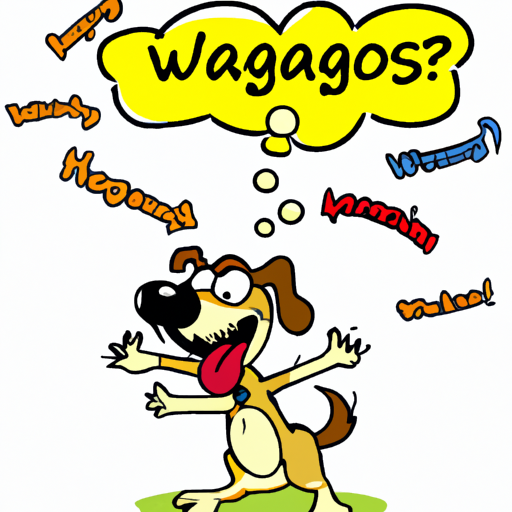Understanding the Basics
The tale of a dog’s tail wag can be as simple as understanding their language. It’s their way of communicating with you. Just as you express happiness, excitement, or fear through your facial expressions and body language, dogs do the same through their tails. A wagging tail can mean a multitude of things, ranging from excitement to fear. Your job, as a caregiver, is to decipher what your furry pal is trying to tell you.
The Science Behind Tail Wagging
Before you can understand the ‘why’, you need to grasp the ‘how’. Dogs have a group of muscles at the base of their tail and pelvis that control the complex movements of the tail. This doesn’t just happen by chance. It’s a product of thousands of years of evolution.
According to research, the direction and speed of the wag can reveal a lot about a dog’s emotional state:
| Emotion | Direction | Speed |
|---|---|---|
| Happy | Right | Fast |
| Anxious | Left | Slow |
| Scared | Tucked | Still |
Interpreting the Wag
Now, let’s dive into the different wags and what they signify.
-
Broad Wag: This is a relaxed and friendly wag. If your dog’s tail is wagging in a wide sweep, they’re probably happy to see you.
-
Quick Wag: A small, quick wag may hint that your dog is nervous or insecure. They may be trying to appease you.
-
Slow Wag: A slow wag with the tail at half-mast can be a sign that your dog is unsure or feeling threatened.
-
Vibrant Wag: If your dog’s tail is wagging so fast that it’s a blur, it’s clear they’re incredibly excited.
-
Tucked Tail: A tail tucked between the legs signifies discomfort or fear.
The Wagging Tail and Other Animals
Interestingly, not all animals interpret a wagging tail the same way. For example, cats wag their tails when they’re annoyed or angry – quite the opposite of dogs. So, when your dog wags its tail at a cat, it could lead to misunderstandings.
FAQs
Q: Do dogs wag their tails when they’re alone?
A: Research has shown that dogs don’t usually wag their tails when they’re alone. They primarily use it as a form of communication with humans and other animals.
Q: Why does my dog’s tail go to the left or right?
A: Studies suggest that a dog wagging its tail to its right is a positive signal associated with happiness, while a wag to the left may express anxiety or uncertainty.
Q: Can a dog wag its tail if it’s not happy?
A: Yes, dogs can wag their tails to express a range of emotions, not just happiness. It can also indicate fear, anxiety, and aggression.
Understanding your dog’s tail wag is a great step towards improving your bond with your pet. As a caregiver, it’s crucial to pay attention to these subtle signs to ensure their well-being. After all, a happy dog equals a happy home.



